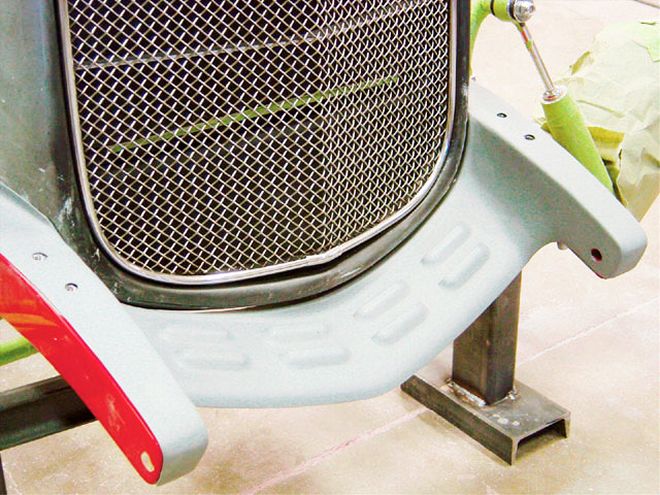

Regardless of what our significant others may say, we, as street rodders, are hopeless romantics. We devote years of our lives to the pursuit of the often-unattainable visions that circulate through our dense brains. Dreams of what can be or will be keep us out in the garage for what must seem to neighbors an incalculable number of hours, and often force us to substitute a warm dinner in front of the television for a couple of cool canned sandwiches between grinding sessions. The worst part of our condition, or so I've been told, is that completion of our goals is seldom accompanied by a lasting sense of fulfillment. To most people, the word "complete" means "to bring to a finish or an end," but for people like us, a more accurate definition may be "I'm bored." Although Betsy's first journey out of the driveway under her own power is the big payoff for all those bloody knuckles and fits of frustration, tinkering with cars has always been as much about the process as it has the results.
Although many people base their success or failure exclusively on an end product, the brains of street rodders are simply wired differently than those of other people. In much the same way that men, when asked a question, typically reply, "I think ...," and women reply, "I feel ...," street rodders have decidedly unique perspectives on life. A 15-minute detour to avoid a couple of speed bumps is wholly justifiable; and reliability, comfort, and fuel-efficiency are on our list of concerns, but just not at the top. Our concerns begin with craftsmanship and ingenuity, and in most cases we don't care whether it's found in a Beetle or a Bentley. Our hobby is one of the last labor industries that still believes in, and rewards, the notion that if store-bought is good, then handmade is better. We live by the motto: "If you can dream it, you can build it," which can also be translated as: "If you can dream it, you can hire someone more capable than yourself to do it for you."
So what do you do when you want a special, one-of-a-kind valance for your '32 and there is no Yoder or Power in your hammer? It just so happens that the Yoder at Steve's Auto Restorations (SAR) in Portland, Oregon, is in perfect working condition, and they recently completed just such a project. SAR has built a solid reputation for expert metal fabrication by shaping everything from roll pans and headlights to complete bodies. The recipient of the valance is a '32 roadster undergoing a complete build at SAR that draws heavily from the early days of the dry lakes with a hint of European flair. The owner wanted a car that was simple and subtle, but also distinct. A custom valance presented a terrific opportunity to be creative without being obtrusive.
The project began by creating a Styrofoam and body filler buck to generalize the desired shape. After the basic shape was determined, paper patterns were used to roughly translate the shape and size of the buck to sheetmetal. Like many custom parts that come to life at SAR, the valance began as a flat sheet of 18-gauge cold-rolled steel. The first piece to be cut and shaped was the centersection, which contained curves of every type and direction. Although the centersection is no more than a foot and a half wide, it contains no less than four different curvatures. The piece was shrunk and stretched in three different machines before finally beginning to resemble the flow of the foam buck. Next, the corner pieces and framehorns could be shaped and fit to the frame. Everything was fit, trimmed, hammered, fit again, hammered some more, and finally fit and tacked in place.
Once the valance began to fit the frame and grille, attention was turned to the louvers. The louvers were expected to be a problem from the very beginning, but how much of a problem was anyone's guess. The centersection had to be shaped prior to being louvered, but in order to fit in the press, it needed to be louvered before being shaped. A Catch-22. As it turns out, the curvature of the front and rear edges thwarted all louvering attempts. The only possible solution was to shape and louver an insert that could be welded into the existing centersection. After much measuring, trimming, and grinding, it was finished.
Although creating the valance required a superior level of skill and machinery that is equally efficient at both shaping metal and instilling fear in grown men, the process is a great representation of what is not available in any catalog or on any shelf. Remember, this is an industry where different is good. Be creative. Challenge yourself, or take your ideas to someone who can help make them a reality for you.